What's Up? September 2025
The nights are drawing in, the skies are darkening, and September is one of the very best times of year to look up! From Glittering summer favourites like the ring nebula to autumns first appearance of the Pleiades, the heavens are alive with wonders! Add saturn at its brightest, the Milky Way stretching overhead, and even the chance of a lunar eclipse - this month promises something special for every stargazer. Read our What's Up guide for September, written by our astronomers, and don't miss a thing!
Greetings fellow stargazers!
Welcome to the September edition of What's Up!
September in the Northern Hemisphere is arguably one of the best months of the year for observing, making it one of our favourite times of the year. The nights continue to draw in offering us some fantastic views of the best objects. We can also still find objects from the summer skies like M13 (The Great Globular Cluster in Hercules) and M57 (The Ring Nebula).A small apeture telescope would be required to see both these deep sky objects, but what a treat they are! By the end of the month, Taurus will be rising earlier, enabling us to see the gorgeous open cluster that is M45 (The Seven Sisters or Pleiades) marking the onset of autumn and to top it all off, we still have the Milky Way arching overhead too.
Constellations
Pegasus
Rising higher in the East shortly after sunset this month is the constellation of Pegasus. In Greek mythology, Pegasus is a divine, winged, white horse born from the blood of the Gorgon Medusa, when she was beheaded by the hero Perseus. The main characteristic feature of this constellation is the "Great Square of Pegasus", a prominent asterism, or pattern of stars, that appears as a large square in the autumn sky.
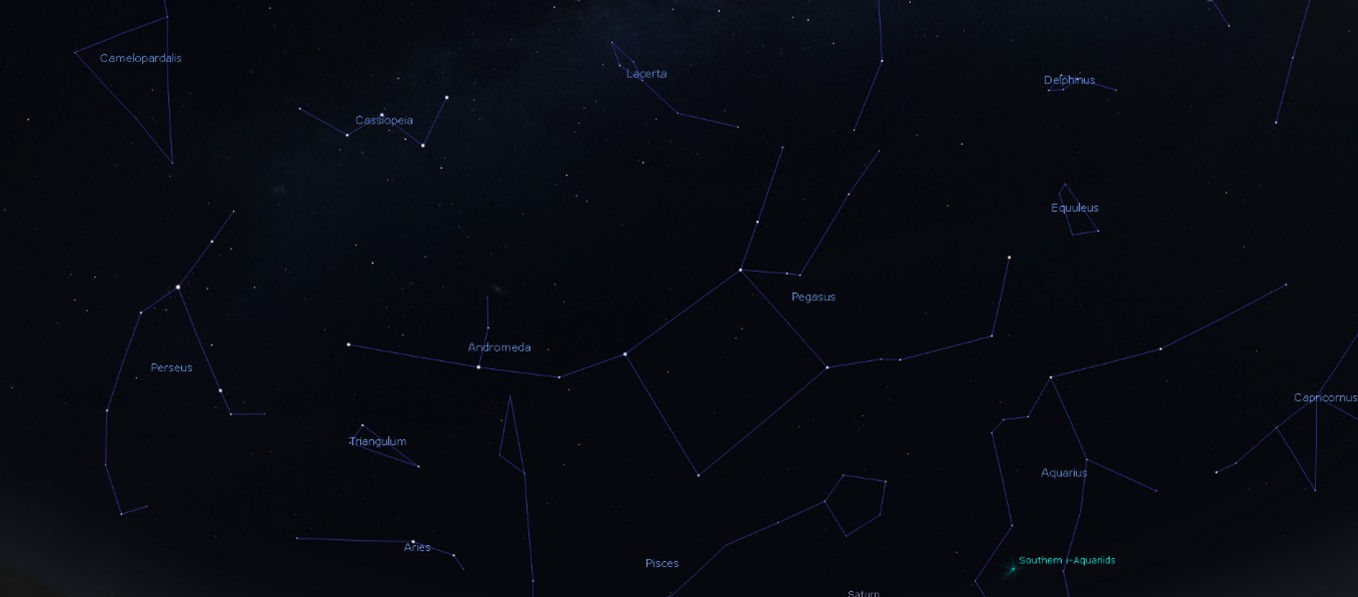
Image showing the location of Pegasus looking east shortly after sunset. Credit: Stellarium
The square is ofter used in dark sky surveys to see how dark the sky is in different areas. People are asked to see how many stars can be seen with the naked eye. From the observatory on a clear, moonless night, we can see up to around 30! Why not try to see how many you see from where you live?
Cephus
High up close to the zenith (the point directly above your head) this month will be the constellation of Cepheus. The constellation looks like a kid's drawing of a house! It's sandwiched between Ursa Major (The Great Bear) and Cassiopeia.
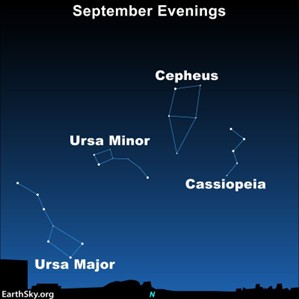
The image shows Cephus along side (or just above) Cassiopeia and where these constellations are in relation to the North star located at the end of the tail in Ursa Minor and the "Plough" or "Big Dipper" which forms part of the constellation Ursa Major. Credit: EarthSky.org
Object of the month: The Garnet star (Mu Cephei)
If you imagine the constellation cephus as a house and then imagine a path leading to where the front door would be, you may be able to observe a small slightly orange looking star. This star is called Mu Cephei but goes by the more common name of the "Garnet" star. This star is unimaginably huge at a whopping 1.7 to 2 billion miles across compared to our Sun's diameter of about 865 thousand miles. This equivalates to about 2840 times the diameter of our Sun. If this star was placed where our sun was in our Solar System, its immense size would extend beyond the orbit of Saturn!
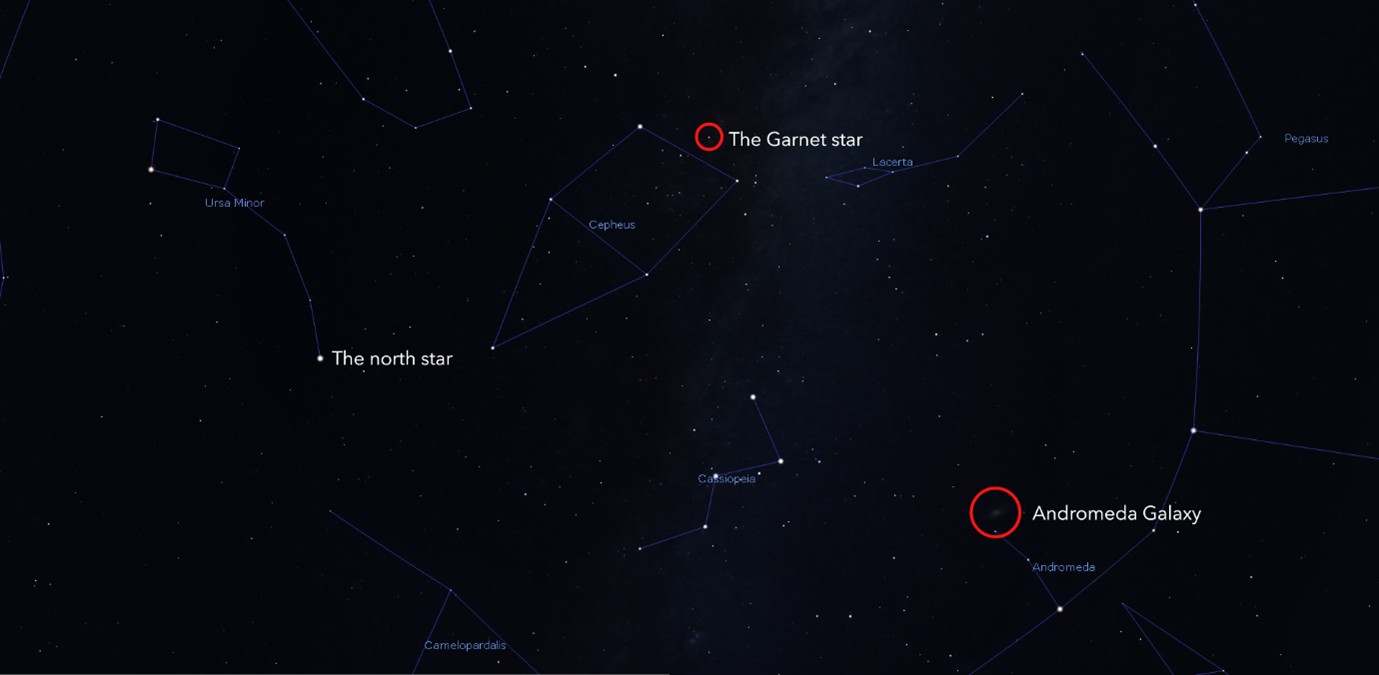
The Garnet star can be located within the constellation of Cephus as seen in this image.The constellations of Cassiopia and Andromeda can also be seen, as can the location of the North star, Polaris. Credit: Stellarium
The star holds the accolade of being one of the most distant stars visible to the unaided eye from anywhere on Earth. It is estimated to be about 6000 light years distant and is only visible due to its immense size. Most stars visible in the night sky tend to only be a few tens or hundreds of light years away.
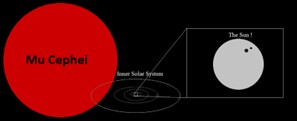
This image shows the scale of how large the Garnet star is compared to our Sun. Credit: Wikimedia
Planets
Saturn will be the highlight planet this month as it reaches opposition (highest point south) on the 21st making September the best month of the year for observing the ringed planet. Even a small telescope would pick up its magnificent rings which are almost edge-on to us this year making them look like a line through the planet. In fact Saturn will be the only planet visible with the naked eye this month, unless you include Jupiter which will be rising in the East around midnight near the very end of the month and will be visible until sunrise when Venus will just becoming visible just before dawn.
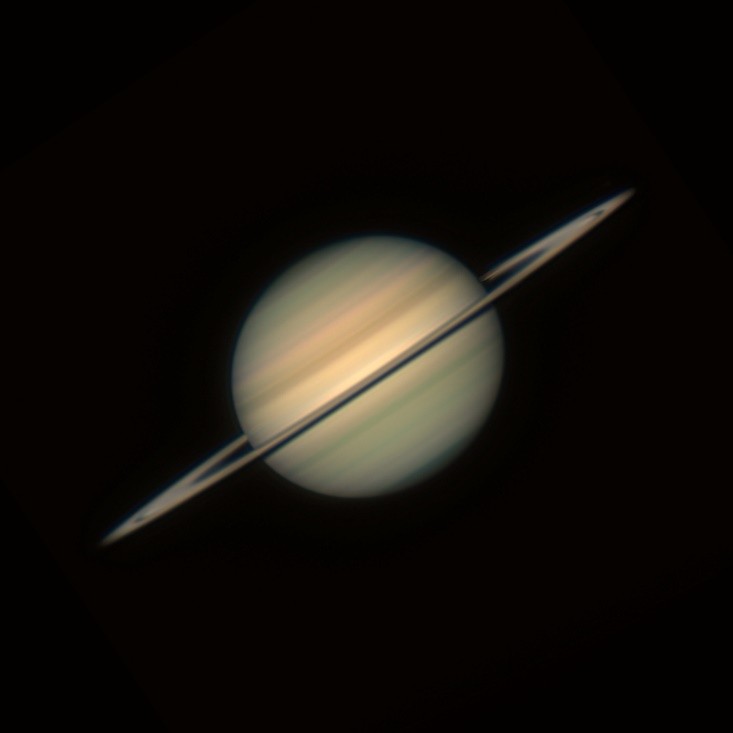
Saturns rings are almost edge on to us this year making the rings almost look like a line through the planet. Credit: Sky & Telescope
Uranus will be close to M45 (the Pleiades) and Neptune will be close by to Saturn, but both require a large aperture telescope for observing.
September Moon phases & other notable dates
7th - Full Moon and a lunar eclipse! The lunar eclipse will be happening at around 6pm, but the Moon won't be rising in the UK until around 8pm. It will be rising just as it's coming out of totality, so you will see the Moon partially in a red shadow, it will become more obvious as the sky gets darker.
14th - Last Quarter
21st - New Moon & Saturn at opposition. Saturn will appear at its brightest and most visible of the year, offering a great opportunity for viewing its rings.
23rd - Neptune at Opposition. Neptune will be at its brightest and most visible of the year, though it will still require a good telescope to view.
30th - First Quarter
From late September - Aurora Borealis. The probability of seeing the northern lights starts increasing from this period due to heightened solar activity, but it is always best to check forecasts closer to the time using apps like 'Spaceweather live' on your mobile device.
That's about it for this month, wishing you all clear skies!









